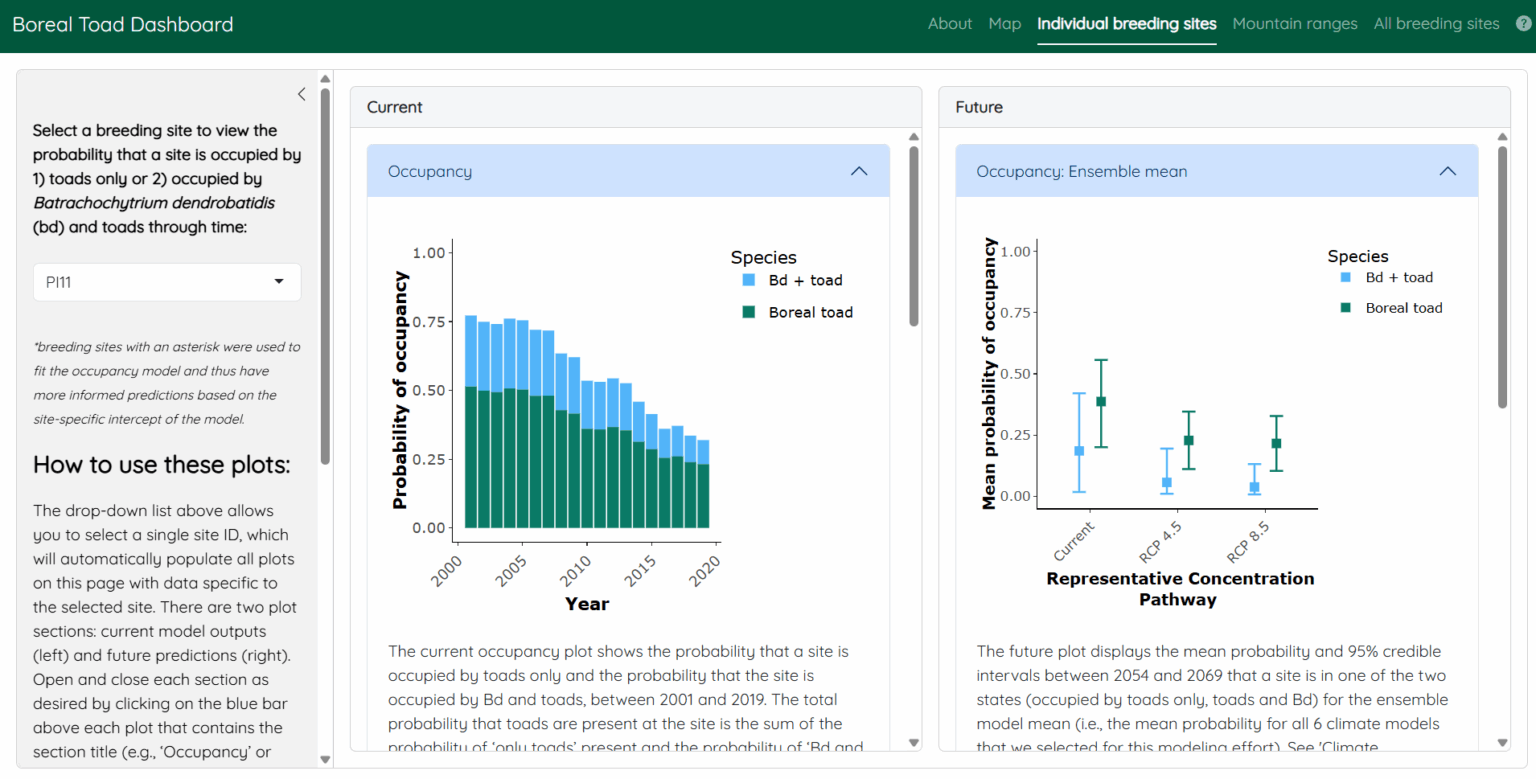
By combining decades of climate and habitat data with remotely sensed imagery and advanced modeling approaches, we have developed tools to help managers in the Southern Rocky Mountain Region protect amphibians from climate-driven habitat loss.
Project Description:
Managing species in a rapidly changing climate requires knowledge of how species will respond to climate change and other threats while simultaneously developing management actions to reduce threats. Amphibians are one of the most threatened taxa on earth and are often early indicators of ecosystem health. To understand the status of and guide management for an imperiled amphibian species, the boreal toad (Anaxyrus boreas boreas), the Changing Landscapes Lab and our partners at USGS worked with the Boreal Toad Conservation Team to reconstruct seasonal hydrology patterns for historical boreal toad breeding wetlands and high elevation watersheds in the Southern Rocky Mountain Region (SRMR), model current and future predictions of drying rates for historical breeding wetlands and the status of the boreal toad in the SRMR, and produce a web-based decision support tool to guide management actions.

While the boreal toad is considered a ‘data rich’ species given data collection efforts that span multiple decades, many amphibian species are considered ‘data poor’, meaning managers lack data on the biology, ecology, or status of the species needed to make sound decisions. To address this knowledge gap, we expanded our approach to also assess climate risks for two ‘data poor’ species: the Great Basin spadefoot toad (Spea intermontana) and the wood frog (Lithobates sylvaticus). These new data can guide management decisions for these species by allowing managers to understand habitat changes with respect to water availability, a crucial element for amphibian survival and persistence. Together, these products demonstrate how cutting-edge technology and analytical methods can produce a range of useful information to support amphibian conservation.
Read more here: A framework for guiding management decisions for amphibians in an uncertain future
[ Back To Changing Landscapes Lab ]


